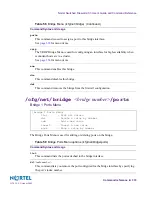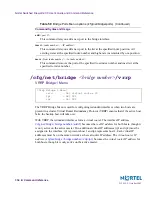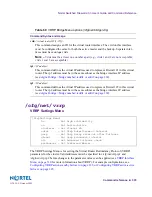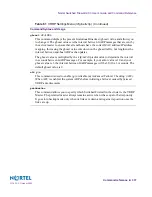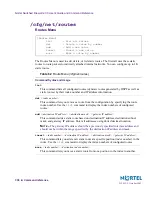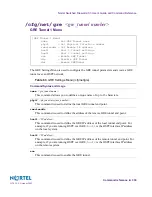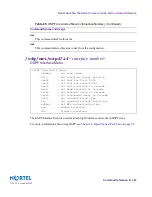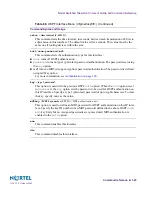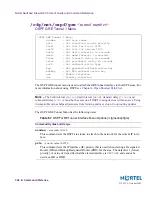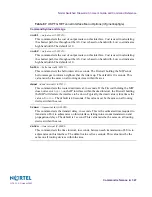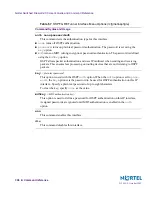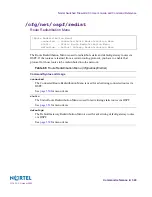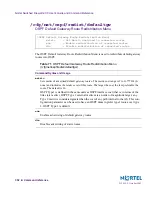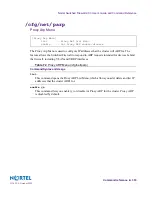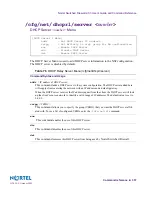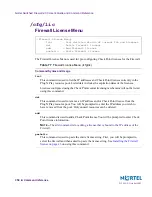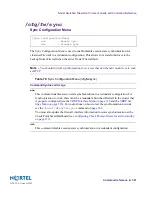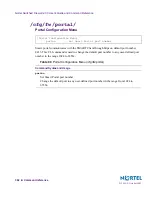
Nortel Switched Firewall 2.3.3 User’s Guide and Command Reference
Command reference
347
213455-L, October 2005
cost1
<output cost (1-65535)>
This command sets the cost of output routes on this interface. Cost is used in calculating
the shortest path tree throughout the AS. Cost is based on bandwidth. Low cost indicates
high bandwidth. The default is 10.
cost2
<output cost (1-65535)>
This command sets the cost of output routes on this interface. Cost is used in calculating
the shortest path tree throughout the AS. Cost is based on bandwidth. Low cost indicates
high bandwidth. The default is 10.
hello
<hello interval(1-65535)>
This command sets the hello interval in seconds. The Firewall holding the MIP sends
hello messages to inform neighbors that the link is up. The default is 10 seconds. This
value must be the same on all routing devices within the area.
dead
<dead interval (1-65535)>
This command sets the router dead interval, in seconds. If the Firewall holding the MIP
does not receive
hello
on the IP interface within the dead interval, the Firewall holding
the MIP will declare the interface to be down. Typically, the dead value is four times the
value of
hello
. The default is 40 seconds. This value must be the same on all routing
devices within the area.
trans
<transmit delay (0-3600)>
This command sets the transmit delay, in seconds. This is the estimated time required to
transmit an LSA to adjacencies on this interface, taking into account transmission and
propagation delays. The default is 1 second. This value must be the same on all routing
devices within the area.
retra
<time interval (0-3600)>
This command sets the time interval, in seconds, between each transmission of LSAs to
adjacencies on this interface. The default value is five seconds. This value must be the
same on all routing devices within the area.
Table 67
OSPF GRE Tunnel Interface Menu Options (/cfg/net/ospf/gre)
Command Syntax and Usage

